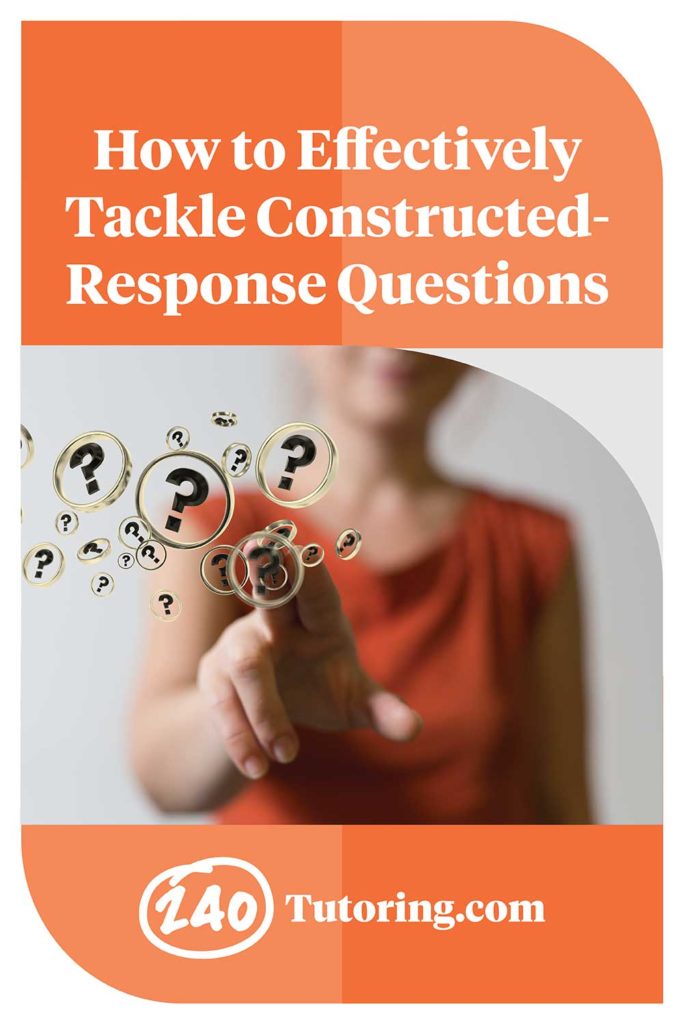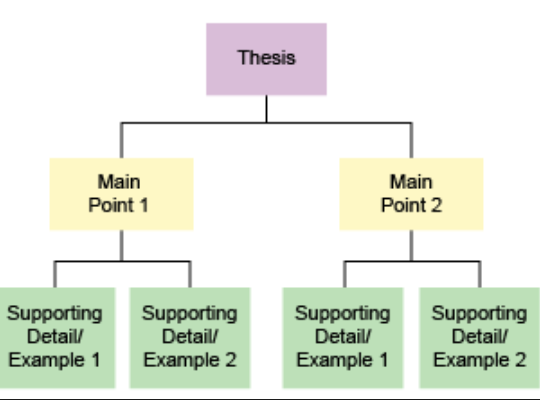Grade Zero Constructed Response Funny Constructed Response Answers
 Answering a constructed-response question (also known as an essay or free-response question) can be intimidating, but it doesn't have to be! At 240, we are here to take the mystery and fear out of CRQs and give you the tools you need to tackle them with confidence.
Answering a constructed-response question (also known as an essay or free-response question) can be intimidating, but it doesn't have to be! At 240, we are here to take the mystery and fear out of CRQs and give you the tools you need to tackle them with confidence.
What Is a Constructed-Response Question?
In most states, constructed-response questions (CRQs) are part of educational testing for teachers. These questions require you to produce or construct the answer and are considered a way to more thoroughly assess your subject knowledge. CRQs can be as simple as writing a sentence or two – or as complex as designing a complete lesson plan.
Multiple-choice tests can measure factual knowledge, but CRQs measure skills like:
- organizing thoughts into clearly planned communication while using appropriate language
- An example might be writing your own definition of each of the levels of Bloom's Taxonomy and then developing a question for each level.
- providing explanations for your responses
- An example might be explaining why you came to your conclusions about the best way to handle this situation.
- demonstrating higher-level thinking skills and concurrently encouraging the use of such skills
- Higher-level thinking typically includes both critical thinking and problem-solving. These skills are seen in determining cause and effect, comparing and contrasting, categorizing, drawing conclusions, or synthesizing information from a variety of sources. An example might be taking what you have learned about classroom management and using it to determine what your first day as a classroom teacher might look like. From that, you might explain how you would solve the problem of two students refusing to do their work and disrupting the class instead.
How Do I Write My Response to a CRQ?
There are lots of different types of CRQs. Luckily, many 240 Tutoring Study Guides include sample prompts and responses modeled precisely after the CRQs for your specific exam. But in general, here is our suggested approach:
1. Read and reread the question or prompt carefully.
Understanding what the question is asking is the critical first step to planning your answer. More mistakes are made from misunderstanding what is being asked rather than not knowing the information. Instead of quickly reading through the question and assuming you understand it, take the time to review and internalize what is being asked. Doing so will allow you to avoid making a costly mistake and risk potentially failing your exam.
There are several important questions to ask yourself as you re-read your CRQ:
- "Exactly what is this question asking me to do?"
- "How many parts are there in this question?"
- "Is the answer stated explicitly in what I am viewing – such as a written lesson, graph, chart, etc.?"
- "Is the question asking me to connect something that I am viewing with information that I already know?"
2. Make a sketch or outline.
Jot down the key points you want to make in your response. Be sure to include each part or item you need to answer from within the question. If the prompt requires it, make a list of details or reasons you will use to support your answers.
Depending on your question, this could look as complex as this:

Or as simple as this:
| Task 1 Answer: | Your response here |
| Explanation: | Your response here |
| Task 2 Answer: | Your response here |
| Explanation: | Your response here |
3. Write your response.
Write the answers you planned in the previous step using complete sentences. This is your chance to show what you know about the topic, so make sure to use detailed explanations and relevant vocabulary.
- For responses with multiple paragraphs or parts, use transition words like first, second, then, next, finally, and in conclusion.
- For literary or argumentative essays, answer the question simply and accurately in the form of a complete statement at the end of the introductory paragraph. This should form your thesis statement which directly responds to the question being asked and serves as a type of "roadmap" for your response.
- The number of paragraphs should reflect the number of points asked for in the questions. A prompt might say something like "Give three main reasons for teaching reading skills in all classrooms." Your response should then include an opening paragraph and three paragraphs that include details of each of the reasons.
- Write a closing paragraph that adequately summarizes each main point of the body paragraphs. The first sentence of the conclusion should rephrase your thesis statement. The second sentence should reiterate how the ideas described in the body paragraphs correspond to your thesis statement.
4. Check your work.
With whatever time you have left, read over your response. Check that you answered all parts of the question clearly. Look for any grammatical or punctuation errors. Remember, you want to show that as a teacher, you can clearly communicate your ideas.
It is also essential to properly pace yourself during the exam in order to allow time to construct a quality CRQ response. 240 Tutoring study guides break down each exam's structure and provide timed practice to help you understand the best pacing techniques.
TIPS: The most important parts of a CRQ are the introduction, the first and last sentence of each paragraph, and the conclusion. Each introduction sentence to a paragraph should introduce the point of the paragraph and how that point relates to the thesis statement.
How Are CRQs Scored?
Constructed responses are typically graded with a numeric rubric. The rating scale can vary depending on your exam. It might be a 0-2 scale or a 1-12 scale. A scoring guide for a CRQ rubric might look something like this:
| Score of 3 | Score of 2 | Score of 1 | Score of 0 | |
| Purpose | Appropriately addresses all parts of the question | Appropriately addresses all or most parts of the question | Appropriately addresses some parts of the question | Fails to appropriately address any parts of the question or simply restates the prompt |
| Subject Matter Knowledge | Exhibits strong knowledge of students, subject matter, pedagogy, and/or facts relevant to the question | Exhibits basic knowledge of students, subject matter, pedagogy, and/or facts relevant to the question | Exhibits weak knowledge of students, subject matter, pedagogy, and/or facts relevant to the question | Exhibits no knowledge or has serious misconceptions of students, subject matter, pedagogy, and/or facts relevant to the question |
| Support | Provides strong explanations supported by details | Provides basic explanations somewhat supported by details | Provides weak explanations not supported by details | N/A |
How Can I Prepare for the CRQ Portion of My Exam?
Studying for the multiple-choice portion of your exam will also prepare you for the essay response portion because you will apply the same subject matter knowledge. But CRQs also measure complex, higher-level, and critical thinking skills. The best way to prepare is to practice planning and writing responses to a variety of prompts. You can search for sample questions online and on your official exam website. It is also helpful to get feedback on your writing from someone knowledgeable in that area. Several 240 Study Guides include the option to have your CRQ professionally graded! This allows you to get personalized scoring and comments to help you improve. Currently, this service is offered for the following guides:
-
-
- TExES Science of Teaching Reading
- FTCE General Knowledge Essay subtest
- PRAXIS Core Writing
-
Constructed-Response Examples
The following are some examples of prompts that test-takers might encounter:
-
-
- Literature — Write an essay comparing and contrasting the theme of two poems, stories, or plays, including details supporting your response.
-
- Mathematics — Write a mathematical equation to solve a problem presented in words or graphs. Develop a word problem based on a given mathematical equation.
-
- Biology — Describe in detail how a biological process occurs in a plant and then explain how it enhances the plant's ability to survive or to reproduce.
-
- History — Write an essay comparing two instances of political processes that occurred concurrently or at different times in different regions of the world.
- Teaching Pedagogy – Review a case study, then identify two ways the teacher could improve their lesson with explanations about why each would be effective.
-
Now that we've given you information about constructed-response questions and strategies for tackling them, they're not so scary, right? Think of CRQs as an opportunity for you to show off what you know about your subject area and your ability to communicate. You've got this!
Need more help preparing for your teacher certification exam? Our Study Guides are test-aligned and come with a money-backed guarantee.
alngindabubabsizarly.blogspot.com
Source: https://www.240tutoring.com/constructed-response-questions/